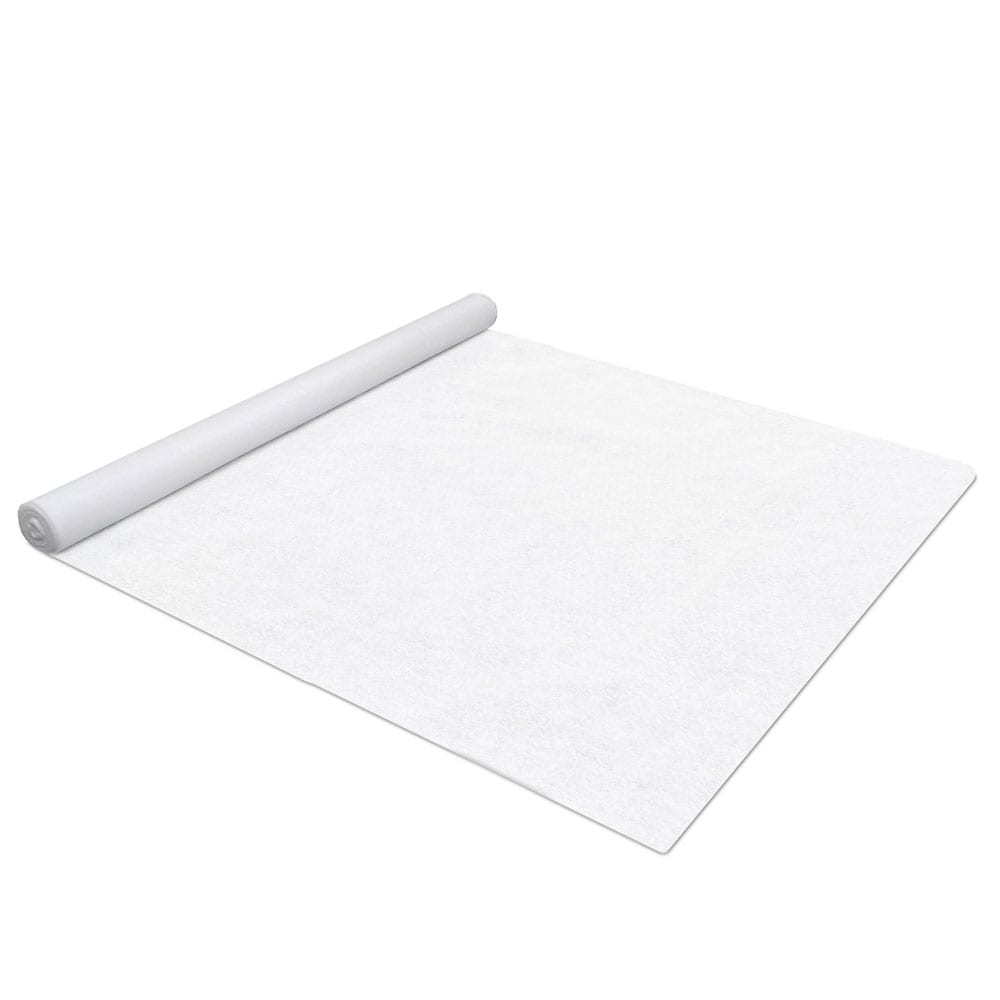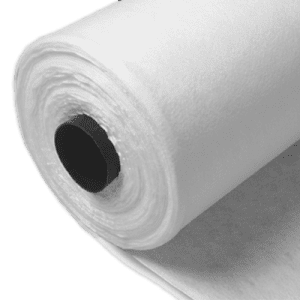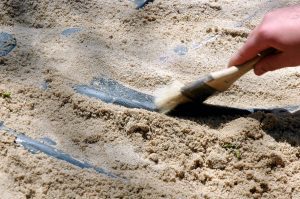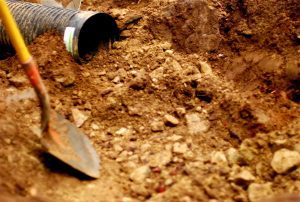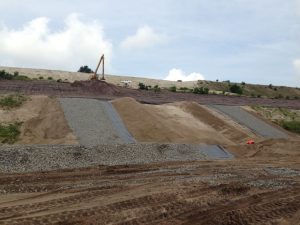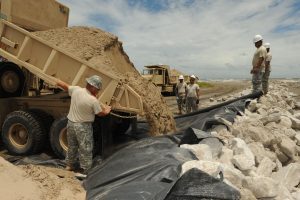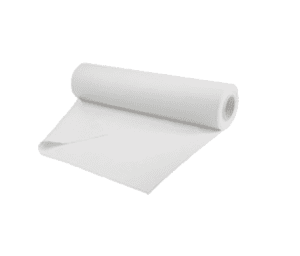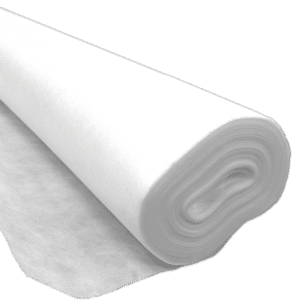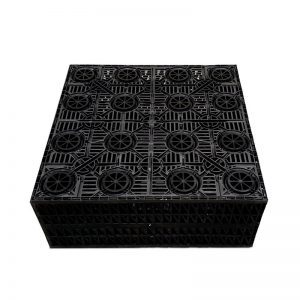What are the uses of non-woven membranes?
Non-woven membranes are used in a wide range of locations, from domestic gardens to public spaces and parks, sports complexes, golf courses and much more. They are ideal for use in new housing projects to reduce the risk of flooding in an area.
The membranes can be used for many uses, but are most commonly used in engineering and drainage. This blog post explains.
Membranes and Fabrics
What ARE NON-WOVEN MEMBRANES?
Permeable geotextile membranes can be woven or non-woven. These are pieces of fabric that are porous in order to allow water to pass through.
The key difference between woven and non-woven membranes is that woven geotextile membranes are made by weaving individual threads together to create a large piece of material. These have high load capacities and are ideal for erosion control and reinforcement projects – but because they aren’t very porous, they aren’t suitable as effective drainage solutions.
On the other hand, a non-woven permeable geotextile membrane is manufactured from materials such as synthetics bonded together. These membranes have holes punched into the material.
Non-woven membranes offer strength and durability. They are easy to cut and are ideal in situations when a lesser load capacity is needed. They provide excellent filtration capabilities – as they allow water to pass through whilst keeping fine particles of soil out.
Most commonly, they are used in the wrapping and protection of soakaway crates and land drains. They are highly effective beneath driveways and roads where long-term ground stabilation and filtration is required.
They are also ideal beneath domestic patio and block paving bases – keeping the granular layer apart from the soil whilst still allowing the water to drain away freely.
Non-woven membranes are permeable materials that allow water to pass through them while leaving other materials, such as soil, at bay.
They can be used to separate two types of materials and can be used to prevent flooding.
Using non-woven membranes for separation
Membranes are used to separate two different types of soil. This is ideal for instances when two different types of soil shouldn’t mix due to consistencies and coarseness. Without the use of a membrane, the smaller soil particles are washed down between the larger soil particles.
The use of the membrane prevents this from happening, and in turn preventing the ground from sinking. But it also allows water to pass through and percolate through the soil layers.
Using non-woven membranes for filtration
The membranes can be used for filtration to prevent blockages.
It can be an occurrence for drains that they become blocked up with debris – which can lead to flooding and other issues. The non-woven membrane means water can pass through it, but debris and larger particles are prevented from entering the drainage system.
The geotextile membranes can be used to sort particles – the larger particles will remain on one side of the membrane, while finer particles pass all the way through.
Using non-woven membranes for reinforcement
Geotextile membranes are commonly used as reinforcement in engineering and construction projects.
Non-woven membranes are excellent at improving ground stabilisation as they provide high tensile strengths. It is useful for retaining the shapes of drains and ditches by holding layers of soil or ground material in place.
They are commonly used to reinforce embankments and roads that are built on unstable soil. They allow for steeper embankments to be created without the worry of them collapsing.
Membranes and Fabrics
Using non-woven membranes for protection
The membranes can also be used to protect against erosion and puncture resistance.
At coastal locations, membranes are used to separate coastal defence projects and the beach itself, in order to prevent erosion. It mean that rip rap or gabions do not tear the materials but allow drainage to occur.
The membranes can also be used to protect plants. It allows plants to grow while protecting weeds around them. This removes competition and prevents nutrients being stolen by other plants.
It can also be used in areas such as landfill sites to prevent harmful substances from contaminating an area.
Using non-woven membranes for drainage
Drainage projects are commonly used with non-woven membranes.
The fabric is used to line a soakaway crate before the elements are inserted. This prevents any debris from entering the soakaway.
Further, they can be used to wrap land drains and perforated pipes. It eases drainage and prevents blockages.
The range of non-woven membranes
Our range of non-woven membranes are ideal for use on all landscaping and engineering projects to create a strong, long-lasting, permeable barrier between the ground and the chosen product or covering above.
It can also be installed under paving, soakaway, rubber or edging products to allow natural drainage while preventing the intermixing of soil layers.
Our range of non-woven membranes includes:
The RecoCrate Soakaway Crate is designed for use with a non-woven membrane to improve drainage and reduce the risk of flooding. The infiltration system collects the water underground and with a permeable membrane wrapped underneath each create, it releases water at any acceptable rate to prevent the ingress of soil and ensure the ground does not become waterlogged.
Non-woven membranes are available in a choice of sizes to create permeable barrier between the ground and another surface.
The RecoCrate Soakaway Crate can be used with the membrane to collect water and release it gradually to prevent flooding.
Summary
Non-woven membranes are porous pieces of fabric that allow water to pass through but can also stabilise and restrict other materials.
Most commonly, the membranes are used in drainage and engineering. The material can also be used for separation, filtration, reinforcement and protection.
It can be used for separation by restricting two different types of soil from coming into contact. This prevents soil from sinking, disrupting the landscape and causing landslides.
It is used for filtration to ensure only water can pass through to drains – excluding debris and preventing systems from getting blocked.
The membrane can be used for reinforcement to strengthen layers, and used in areas such as embankments or grounds with unstable soil to reduce the risk of land collapse.
It can also be used for protection. In coastal areas, membranes can be used to separate defence areas from the beach itself. Membranes can be used in landfill sites to restrict dangerous chemicals from coming into contact with each other, and it can be used in gardens to prevent weed growth.
Click here to view our range of non-woven membranes.
To find out more information, call our helpful and friendly customer service team on 01246 418144. Alternatively, contact us on webchat or email us here.
Membranes and Fabrics

